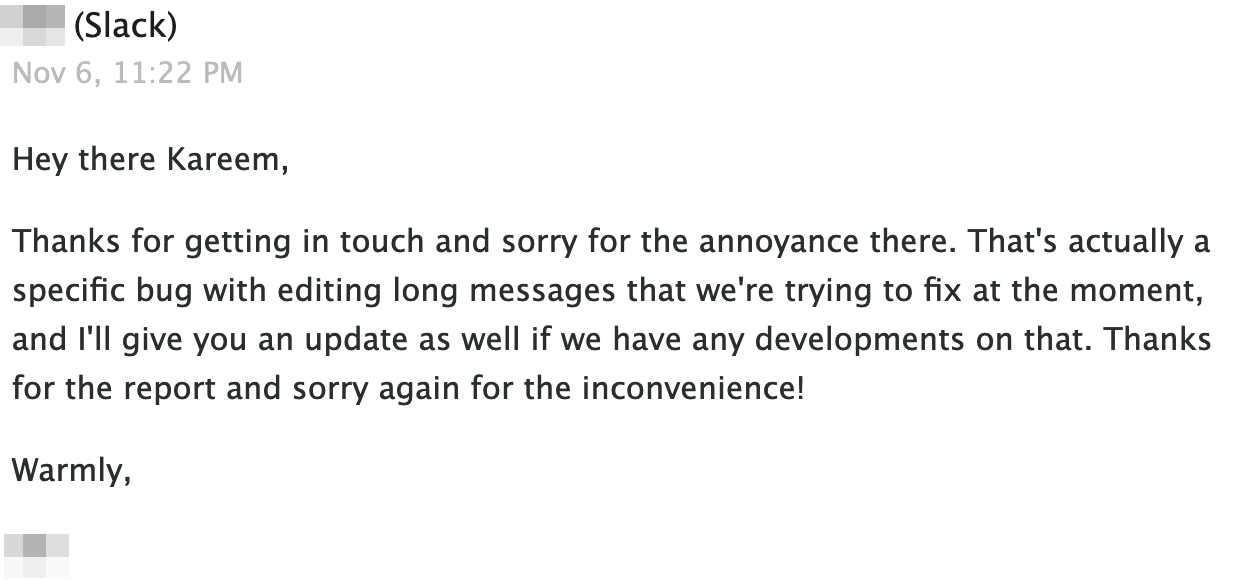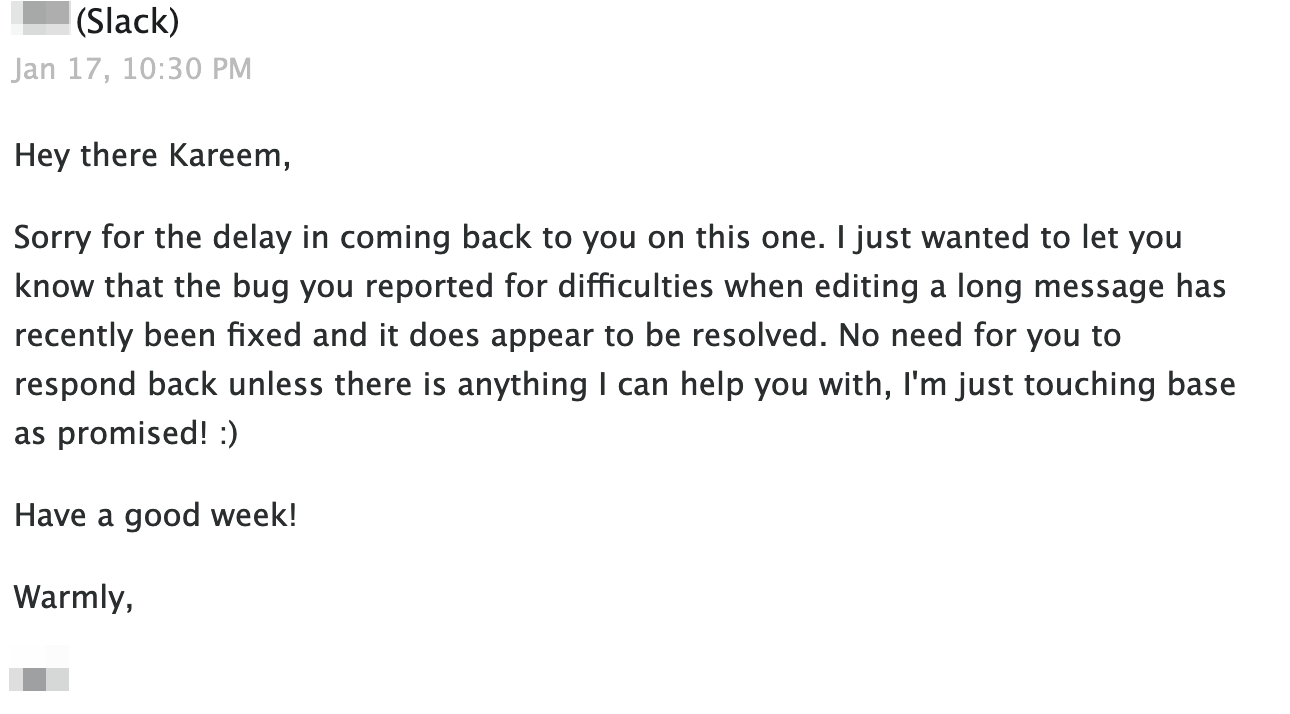Why your SaaS should collect and use customer feedback
You're heard all the reasons about why not to gather feedback: "I know what customers want". Or "they'll just ask for faster horses". Or "Steve Jobs didn't collect feedback". I've heard 'em too. Below, I'll talk about reasons people say they don't need to collect feedback (and why they're wrong).
And I'll talk about the four reasons why you SHOULD gather and use feedback to drive your SaaS company's growth. Read on for the goods.
First, let’s talk about what we mean by collecting and using customer feedback. It means having a process to send your customer feedback into a single place, and using it to make your product or service better.
We’ll talk shortly about why it’s important to collect and use feedback. But first let’s cover the reasons to NOT collect or use customer feedback to improve your product or service.
Reasons to NOT collect Customer Feedback
1. You don’t care about customer feedback
This is straightforward: for whatever reason, you don’t care about collecting and using customer feedback. You should keep reading to see if the reasons to collect customer feedback change your mind.
2. You have a product vision and want to execute on that
This is a variation on Henry Ford’s apocryphal “faster horses” quote and Steve Jobs’ line that “people don’t know what they want until you show it to them.” When you’re building a category-creating product before it launches (like the first mass-market car or the iPhone), there might be an argument that customer feedback is too rooted in what customers know (like horses or the Razr phone) to provide useful feedback.
But once a product is in customer hands, evidence shows that even Ford would have been better off listening to feedback. As Patrick Vlaskovits explains:
General Motors in the 1920s… took the direct opposite of Henry Ford’s tack of “Any color … so long as it is black”. [It] is best summed up by Alfred Sloan’s consumer-research driven “A Car for Every Purse and Purpose,” which aimed to produce cars for distinct market segments.
What happened to Ford when GM listened to its customers? Vlaskovits explains:
In 1921, the Ford Motor Company sold about 2/3 of all the cars built in the U.S. By 1926, this share had fallen to approximately 1/3. And in 1927, when Ford belatedly responded (at tremendous financial cost and internal strife) to changes in the market’s tastes and competitive innovation by shutting down production temporarily to re-tool his factories and bring the Model A to the market, that percentage fell to about 15%.
People wanted better cars and better financing options (which GM offered). GM listened and Ford didn’t; GM gained market share and Ford lost it.
It’s often said that Steve Jobs didn’t listen to customer feedback. In this interview with Inc magazine, Jobs said:
It sounds logical to ask customers what they want and then give it to them. But they rarely wind up getting what they really want that way. I think really great products come from melding two points of view—the technology point of view and the customer point of view. You need both.
As Jobs said at Apple’s 1997 Worldwide Developers Conference:
You’ve got to start with the customer experience and work backwards to the technology. I’ve made this mistake probably more than anybody else in this room. As we have tried to come up with a strategy and a vision for Apple, it started with ‘What incredible benefits can we give to the customer? Where can we take the customer?’ I think that’s the right path to take.
The point is not so much to listen to feedback and give customers what they asked for as it is to understand the “why” behind the request. If customers are asking for blue buttons instead of red, don’t simply give them blue buttons: first ask why customers want them (and keep asking why until you understand).
Broadly, it’s important to have a product vision. But even Ford and Jobs -- two of the greatest innovators of the 20th century -- did, in fact, listen to customer feedback.
3. “Let the cream rise to the top”
This is the “marination” approach, where you read some or all feedback, let it wash over you, and somehow magically make good product decisions about what to build.
Because we’re all fallible humans, this approach makes you subject to recency and availability biases. When it’s time to build the next features, the ones that you bias towards are the ones that you most recently heard (thanks to recency bias), and the ones that quickly come to mind (thanks to availability bias)... not the ones that your customers need and will continue to pay you for if you build.
4. It’s too much work or too expensive to collect customer feedback
This is a fair point: the cost of collecting and using feedback is higher than the value it provides. There are two ways to address this:
1. You can make it cheaper to collect and use customer feedback. How you’d do this depends on your situation: you can do this by using a purpose built tool to collect and organize feedback that respects your team’s workflow. You can integrate feedback into your team’s decision-making workflow instead of making it ad-hoc. You can use cheaper tools. Etc.
2. You can test whether the value you get from feedback is as low as you assume. You could run an experiment to collect feedback for a month to understand whether having and using similar feedback would be useful on an on-going basis. You could review historical feedback. In short, you could spend a little time understanding whether—with the evidence of many successful companies who listen to customers—your assumptions about the value of feedback are correct.
Reasons to collect Customer Feedback
We’ve covered some reasons to NOT collect customer feedback. Let’s talk about the reasons to collect and use customer feedback to improve your product of service.
1. Collect customer feedback to drive growth
If you don’t understand where your product or service isn’t meeting customer needs, how will you ever meet them? We’re big believers in the “Jobs To Be Done” model (JTBD). JTBD talks about how customers “hire” products to do “jobs” for them (as an example, I’m hiring Google Docs to give me a great experience writing this post).
According to JTBD, there are some key jobs customers hire your product to do for them, some jobs your product could be doing better, and some more jobs your product could do.
If you don’t collect or use feedback, you’re relying on intuition to understand the jobs that your customers need done (or done better). Like in relationships, it’s frankly impossible to “just know” what customers are thinking: you need to ask for and listen to feedback to understand what customers need.
And once you understand what customers need, you can use that knowledge to do more jobs for your customers, or the current jobs -- but better. And when you help customers more, you’ll grow by retaining customers, and expanding your accounts.
And retention and expansion revenue are the keys to SaaS growth.
2. Focus on the important things
Driving growth is a function of knowing what to focus on. When you collect and organize your customer feedback so that it’s easy to get answers to important questions to help you prioritize.
For example, imagine the business priority is to win more deals this quarter. Would it be helpful to quickly see “feedback from lost deals” so you could address some of it?
Or what about if the priority was to reduce churn? If you could see “feedback from churned customers”, would that be helpful?
Or, since all feedback is not created equal, how helpful would it be to understand the plan, MRR, deal size, and other attributes for each person who left feedback? And then be able to filter by it to see “feedback from customers on our Enterprise plan” or “feedback from customers in EMEA” (or feedback from whichever key customer segment you cared about)?
With feedback from any customer segment at your fingertips—along with the number of people and total revenue of accounts who left similar feedback—you’ve got a powerful tool to prioritize and focus on the things that will really move the dial.
3. You can cut your research time to deliver an excellent solutions
When you know who left specific feedback, you can channel your inner Steve Jobs to reach out to understand the “why” behind the request, and to sanity-check your solution to their problem.
Superhuman CEO Rahul Vohra describes how they use their homegrown customer feedback database:
At the start of any feature, we can automatically generate a skeleton product requirements document that contains many thousands of words of verbatim customer quotes. This easily shaves a month or two of user research off any feature.
Think about the gains that would come from shaving days, weeks, or months of research time from your product development cycle.
4. Surprise and delight customers by closing the loop
When you’ve built something for people who asked for it, you should get the credit!
You might get the credit if your requesters see some of your product marketing (assuming you have some)!
But the best way to get credit -- and surprise and delight customers -- is to send them a note about how you listened to them and built something they asked for.
Here’s Vohra again on another advantage of collecting and using customer feedback to drive product development:
At the end of any feature, we can close the loop with anybody who ever talked about it — and on precisely the same email thread in which they brought it up. This becomes a lovely source of surprise and delight!
I have first-hand experience with this. Slack won me as a delighted customer when I reported a bug in Nov 2016:

And then replied to the same thread in Jan 2017 (two months later!) telling me they fixed it:

This was the first time a software company had cared enough to both address my feedback AND tell me.
This was me when I got that email:

Summary
At this point hopefully you’re convinced that collecting and acting on customer feedback will help you grow your SaaS business. From here you can read about how to set up a customer feedback system, or learn why Customer Success should use feedback to drive your product roadmap.
Last Updated: 2023-04-20/f/84825/390x390/7114e16710/founder-headshot-kareem.png)
Kareem Mayan
Kareem is a co-founder at Savio. He's been prioritizing customer feedback professionally since 2001. He likes tea and tea snacks, and dislikes refraining from eating lots of tea snacks.
Prioritize high-value Feature Requests
Centralize customer feedback from HubSpot, Intercom, and Slack.
Prioritize high-value features sorted by churned revenue or MRR.
Close the loop for Sales and CS by automating status updates from JIRA.